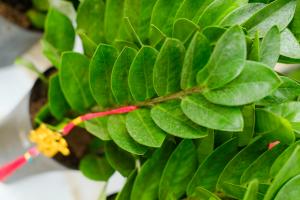Introduction
Aquatic plants are those that thrive and grow mainly in water, and they play an important role in aquatic ecosystems. They are known for their ability to adapt and survive in their aquatic environment. Various adaptive strategies and mechanisms allow them to survive underwater.
Adaptive mechanisms of aquatic plants
Adaptation is the process by which an organism becomes better suited to its environment. Aquatic plants have developed various adaptive mechanisms that allow them to thrive and survive in their unique underwater environment. One such mechanism is the ability to absorb nutrients and gases through their stems, leaves, and roots. Their ability to absorb CO2 allows them to undergo photosynthesis, which is essential for their survival. Additionally, aquatic plants have developed specialized structures such as root-like appendages called "rhizoids" that enable them to anchor themselves to the substrate they grow on, preventing them from being swept away by water currents.
Respiration mechanisms of aquatic plants
Respiration is the process by which organisms obtain energy from their environment. Aquatic plants have developed specialized respiratory mechanisms to obtain oxygen from the water. Unlike animals, which obtain oxygen through lungs or skin, aquatic plants have developed various structures like lenticels and stomata that allow them to absorb atmospheric gases. Lenticels are specialized organs that allow gas exchange between the underwater environment and the plant's internal tissues. Stomata are tiny pores on the plant's leaves that allow gases to pass through. These structures enable aquatic plants to obtain adequate amounts of oxygen to survive.
Plants' Adaptation to Waterlogging and Flooding
Aquatic plants often live in areas where the soil is waterlogged, which can sometimes flood the plant's roots. Plants have evolved to deal with waterlogged soils by developing specialized root systems such as adventitious roots that grow aboveground, and aerenchyma, which allows air to circulate around root systems to avoid damage to plant tissues. By growing roots above the surface, aquatic plants can access air, which is required for respiration. Meanwhile, aerenchyma is made up of a system of interconnected tubes and spaces that allow gases to move from the roots to the stem and leaves, ensuring plant survival during floods and waterlogging events.
Conclusion
Aquatic plants are remarkable organisms with unique adaptive mechanisms that enable them to survive in underwater environments. They have evolved several strategies for oxygen acquisition, nutrient absorption, and waterlogging and flooding adaptation. Understanding these mechanisms can help manage and conserve aquatic plant species, which play vital roles in aquatic ecosystems.

 how many times do yo...
how many times do yo... how many planted tre...
how many planted tre... how many pine trees ...
how many pine trees ... how many pecan trees...
how many pecan trees... how many plants comp...
how many plants comp... how many plants can ...
how many plants can ... how many plants and ...
how many plants and ... how many pepper plan...
how many pepper plan...
































